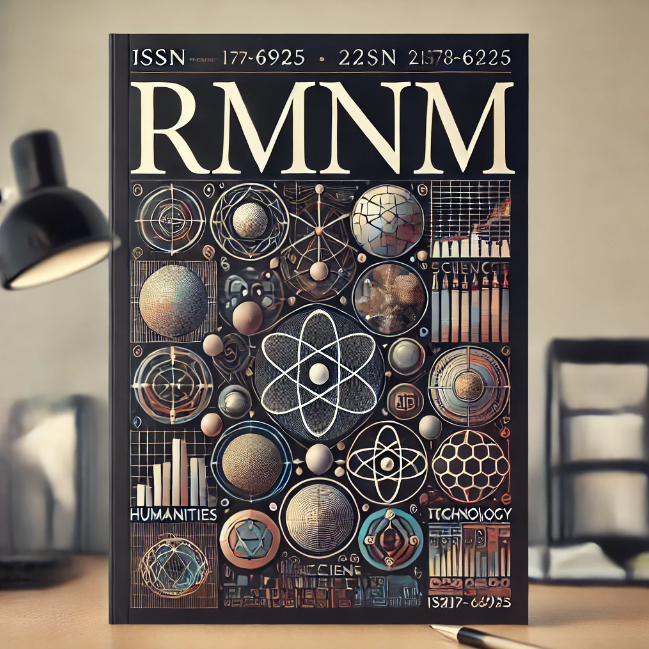COMPARAÇÃO DA ESTIMULAÇÃO ELÉTRICA TRANSCUTÂNEA DO NERVO TIBIAL VERSUS PARASSACRAL EM ADULTOS COM INCONTINÊCIA URINÁRIA DE URGÊNCIA
DOI:
https://doi.org/10.61164/rmnm.v12i2.3135Keywords:
Keywords: Tibial nerve electrostimulation; parasacral electrostimulation; urinary incontinence.Abstract
INTRODUCTION: Urinary incontinence (UI) is the involuntary loss of urine, affecting quality of life and requiring specialized treatment. Transcutaneous electrical stimulation is a physiotherapeutic approach that uses low-intensity currents to improve neuromuscular function. OBJECTIVES: To compare the efficacy of transcutaneous electrical stimulation of the tibial nerve and parasacral stimulation in the treatment of adults with urge urinary incontinence. METHODOLOGY: This is an integrative review of the literature conducted in the PubMed, Scielo and BVS databases, using the descriptors “Transcutaneous Electric Nerve Stimulation” and “Urinary Incontinence”, registered in DeCS/MeSH, associated by the Boolean operator AND. Randomized clinical trials from the last five years, in Portuguese or English, with adults over 18 years of age were included. Duplicate studies, research protocols, and those not related to urinary incontinence or that did not meet the inclusion criteria were excluded. RESULTS AND DISCUSSION: A total of 89 studies were identified through the applied methodology and, after applying the inclusion and exclusion criteria, 4 articles were included for final analysis. The studies discuss the application of tibial and parasacral electrostimulation methods, thus agreeing that the application provides benefits in reducing urinary urgency, with parasacral electrostimulation being superior; however, the effects are not visible in patients with cognitive problems and dependents. CONCLUSION: After comparing both interventions, it is possible to conclude that both techniques provide better results in reducing urinary urgency; however, parasacral electrostimulation was superior in improving quality of life during and after treatment.
References
BALCOM, Anthony H et al, Initial Experience With Home Therapeutic Electrical Stimulation for Continence in the Myelomeningocele Population, The Journal of Urology, p. 1272–1276, 1997.
BERGO, Pedro Augusto et al, Incontinência urinária: prevalência, classificação e manejo na população adulta. Brazilian Journal of Health Review, v. 7, n. 2, p. e69138–e69138, 2024.
BOOTH et al, Tibial nerve stimulation compared with sham to reduce incontinence in care home residents: ELECTRIC RCT. Health Technology Assessment, v. 25, n. 41, p. 1–110, 2021.
COFFITO, Conselho Federal de Fisioterapia e Terapia Ocupacional. Resposta a solicitação do GT do Rol de procedimentos da ANS a contribuição da ABRANGE e FENASAÚDE a respeito da inclusão de diretriz para o procedimento ESTIMULAÇÃO ELÉTRICA NERVOSA TRANSCUTÂNEA. Ofício GAPRE 090/2013. Maio, 2013.
COFFITO, Conselho Federal de Fisioterapia e Terapia Ocupacional. Resolução Nº 401, de 18 de AGOSTO DE 2011. Disciplina a Especialidade Profissional de Fisioterapia na Saúde da Mulher e dá outras providências. Disponível em: <https://www.coffito.gov.br/nsite/?p=3164>. Acesso em 30 set. 2024.
DR. ELTON SANCHOTENE. O que é a incontinência urinária de esforço feminina, como evitar e tratar?, 2019. Urologista Sanchotene, disponível em: <https://urologistasanchotene.com.br/o-que-e-a-incontinencia-urinaria-de-esforco-feminina-como-evitar-e-tratar/>. acesso em: 29 out. 2024.
FALCÃO, P. J; ARIAS, A. M; DRIUSSO, P. Parasacral versus tibial transcutaneous electrical stimulation to treat urinary urgency in adult women: Randomized controlled clinical trial. European Journal of Obstetrics & Gynecology and Reproductive Biology, v. 267, p. 167–173, 2021.
FENOCCHI et al, Cost consequence analysis of transcutaneous tibial nerve stimulation (TTNS) for urinary incontinence in care home residents alongside a randomised controlled trial. BMC Geriatrics, v. 23, n. 1, 2023.
FERNANDES, AILTON et al, Tradução para o português: An International Continence Society (ICS) report on the terminology for adult neurogenic lower urinary tract dysfunction (ANLUTD), Einstein (São Paulo), v. 20, 2022.
FIOCRUZ. Principais questões sobre incontinência e urgência urinária, 2022. Portal de Boas Práticas em Saúde da Mulher, da Criança e do Adolescente. Disponível em: <https://portaldeboaspraticas.iff.fiocruz.br/atencao-mulher/principais-questoes-sobre-incontinencia-e-urgencia-urinaria/>. Acesso em: 21 set. 2024.
FRANÇA, I. D. M.; LIVRAMENTO, R. A. ASSOALHO PÉLVICO E SUA RELAÇÃO COM A INCONTINÊNCIA URINARIA: CAUSA E TRATAMENTO FISIOTERAPÊUTICO. Brazilian Journal of Implantology and Health Sciences, [S. l.], v. 5, n. 5, p. 4023–4034, 2023. DOI: 10.36557/2674-8169.2023v5n5p4023-4034. Disponível em: https://bjihs.emnuvens.com.br/bjihs/article/view/970. Acesso em: 29 out. 2024.
LIDYANNE, Silva, Eletroestimulação nervosa transcutânea parassacral uma vez por semana no tratamento da bexiga hiperativa em crianças - um estudo de não inferioridade. Tese de Doutorado em Saúde. Juiz de Fora; Universidade Federal de Juiz de Fora, 2023.
LUKACZ, Emily S et al. Urinary Incontinence in Women, JAMA, v. 318, n. 16, p. 1592–1592, 2017.
MARTINS, M; PALMIERI, V; OLIVEIRA, C. Influência da eletroestimulação parassacral e do biofeedback manométrico, na incontinência urinária por hiperatividade do detrusor como sequela de mielite transversa aguda, Fisioterapia Brasil, v. 16, n. 2, p. 119–123, 2016.
SANTOS et al, Eletroestimulação funcional do assoalho pélvico versus terapia com os cones vaginais para o tratamento de incontinência urinária de esforço, Revista Brasileira Ginecologia e Obstetrícia, v. 31, n. 9, 2009.
SCHREINER et al, Transcutaneous tibial nerve stimulation to treat urgency urinary incontinence in older women: 12-month follow-up of a randomized controlled trial. International Urogynecology Journal, v. 32, n. 3, p. 687–693, 2020.
Downloads
Published
How to Cite
Issue
Section
License
Copyright (c) 2024 Revista Multidisciplinar do Nordeste Mineiro

This work is licensed under a Creative Commons Attribution-NonCommercial-ShareAlike 4.0 International License.




